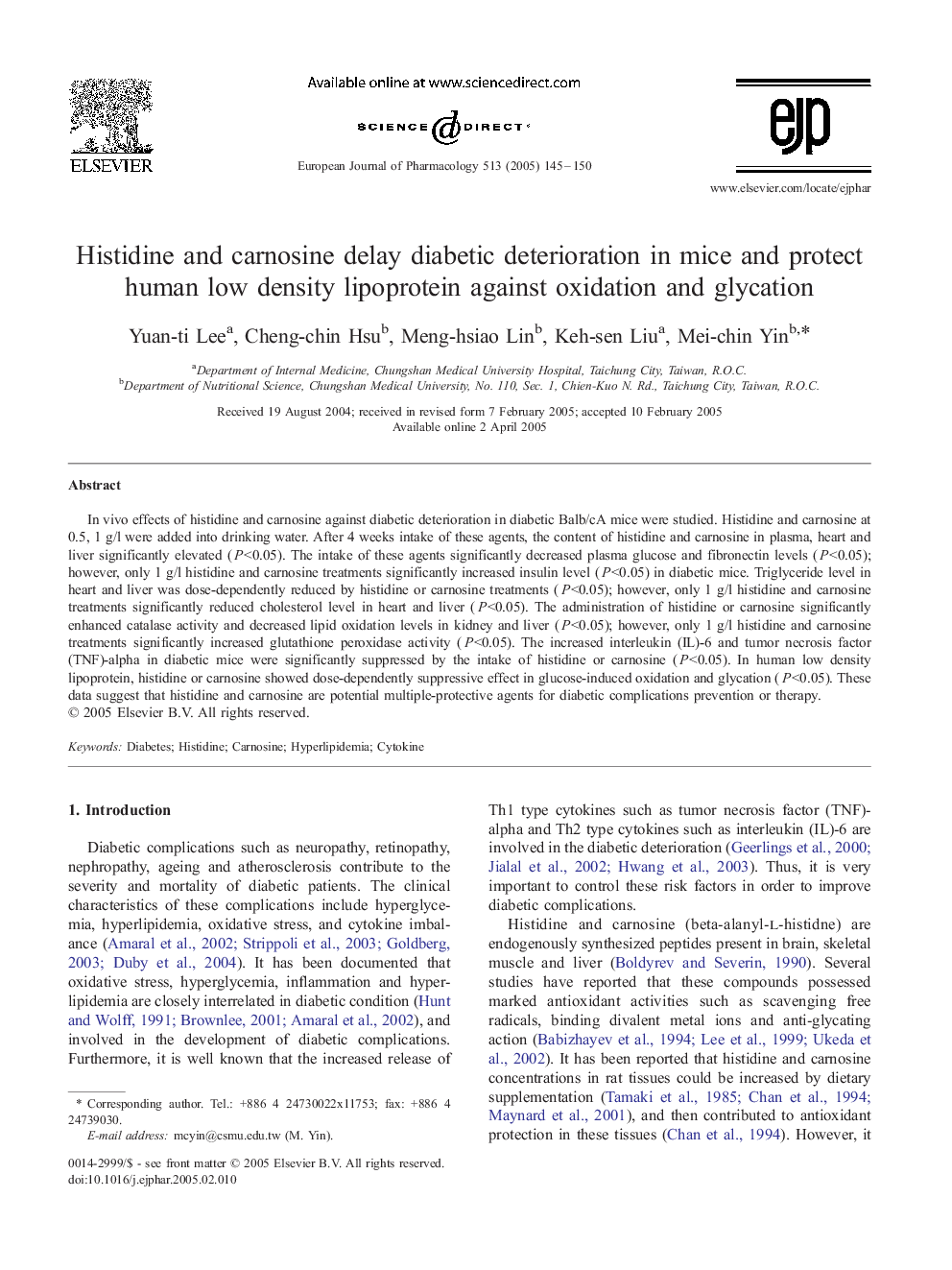| Article ID | Journal | Published Year | Pages | File Type |
|---|---|---|---|---|
| 9921378 | European Journal of Pharmacology | 2005 | 6 Pages |
Abstract
In vivo effects of histidine and carnosine against diabetic deterioration in diabetic Balb/cA mice were studied. Histidine and carnosine at 0.5, 1 g/l were added into drinking water. After 4 weeks intake of these agents, the content of histidine and carnosine in plasma, heart and liver significantly elevated (P<0.05). The intake of these agents significantly decreased plasma glucose and fibronectin levels (P<0.05); however, only 1 g/l histidine and carnosine treatments significantly increased insulin level (P<0.05) in diabetic mice. Triglyceride level in heart and liver was dose-dependently reduced by histidine or carnosine treatments (P<0.05); however, only 1 g/l histidine and carnosine treatments significantly reduced cholesterol level in heart and liver (P<0.05). The administration of histidine or carnosine significantly enhanced catalase activity and decreased lipid oxidation levels in kidney and liver (P<0.05); however, only 1 g/l histidine and carnosine treatments significantly increased glutathione peroxidase activity (P<0.05). The increased interleukin (IL)-6 and tumor necrosis factor (TNF)-alpha in diabetic mice were significantly suppressed by the intake of histidine or carnosine (P<0.05). In human low density lipoprotein, histidine or carnosine showed dose-dependently suppressive effect in glucose-induced oxidation and glycation (P<0.05). These data suggest that histidine and carnosine are potential multiple-protective agents for diabetic complications prevention or therapy.
Related Topics
Life Sciences
Neuroscience
Cellular and Molecular Neuroscience
Authors
Yuan-ti Lee, Cheng-chin Hsu, Meng-hsiao Lin, Keh-sen Liu, Mei-chin Yin,
